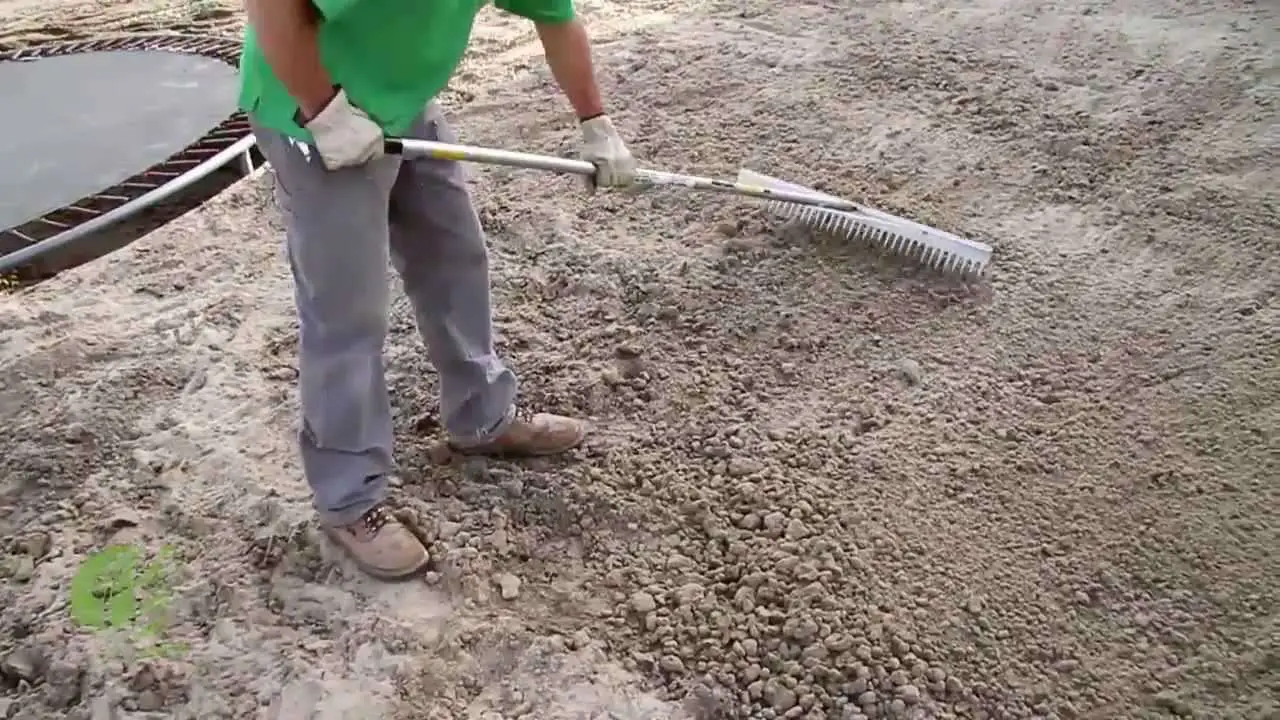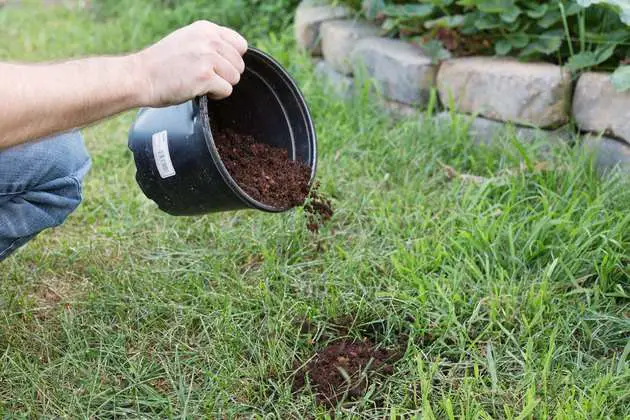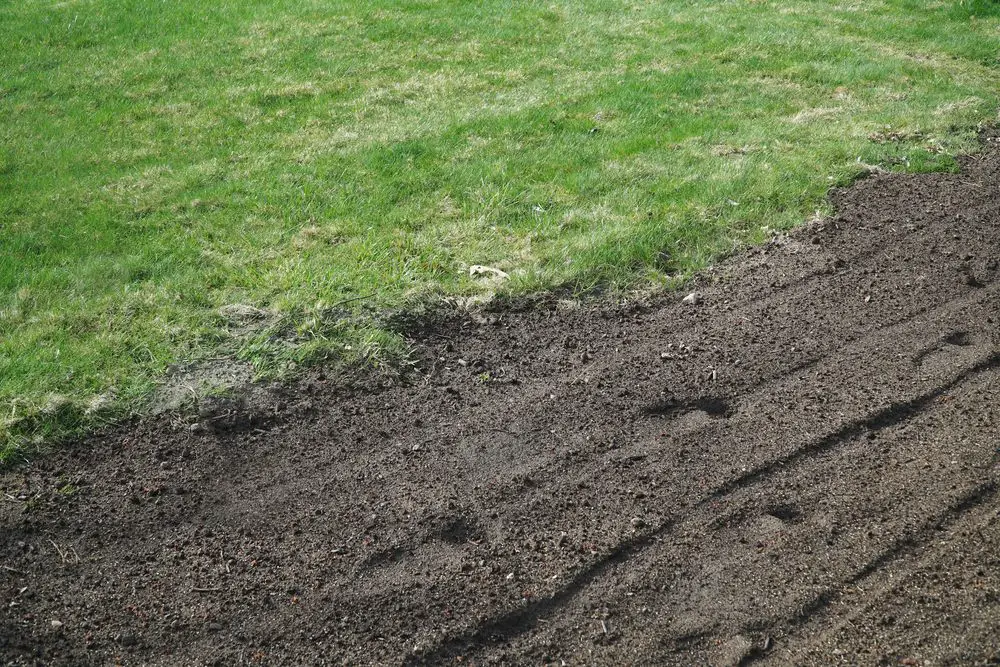Can I Just Throw Grass Seed On My Lawn How To Overseed Your Lawn
If youre someone who is wishing for green and healthy grass, then you may already know overseeding the lawn is part of the process. Still, you might be wondering how to overseed your lawn. More specifically, can you just sprinkle grass seed on the existing lawn?We hear this question a lot. Homeowners tell us that they typically just toss some grass seed down on bare spots to try and fill them in. But oftentimes theyre frustrated that this doesn’t work like they expect it will. Well explain why you really cant just sprinkle grass seed on an existing lawn and expect amazing results.
Planting Grass Seed In Spring
Spring is another great time to seed the lawn. Its particularly good if you live where springs are long and cool. For spring planting, its absolutely essential that you continue to regularly water the seed and the sprouted grass through the remainder of the spring, summer, and well into the fall. Establishment failures are often connected to improper watering. Early summer is another possible time, but youll need to water more often.
Spread The Grass Seed
Before choosing a grass seed mixture, know your grass type. Use seeds for either the same type of grass already growing in your yard or a compatible grass type. Usually, compatible means cool-season grass types with other cool-season grass types and warm-season grass types with other warm-season grass types.
Fill a fertilizer spreader with your chosen grass seed mixture. Walk the spreader across your lawn in rows, following the same pattern you use when you mow. For information on how much seed to use, see the package label.
You May Like: How To Name Your Lawn Care Business
Sowing Grass Seed On A Existing Lawn
Adding more lawn seed to an existing lawn is commonly known as overseeding, this garden practice is one of the key steps to achieving a lush green lawn. Sowing grass seed on an existing lawn helps to fill in dead or poor growing patches. It also helps to make your lawn greener as well as fight of those pesky weeds.
How To Spread Topsoil Over An Existing Lawn

Rich topsoil is as beneficial for new grass as it is for old. Few people realize they can significantly boost the health of their lawn by carefully adding new topsoil. If you simply pile the soil on, you can kill the grass. However, if you follow these instructions to add topsoil to your existing lawn it will be rich and lush-looking and your home will be the envy of the neighbourhood.
You May Like: How To Charge For Lawn Care Services
Mowing New Grass Seedlings
If patching or over seeding you need to keep the existing lawn in check so mow before seeding then mow on your normal schedule on a dry day on a high setting with sharp blades.
If mowing a new lawn start when grass gets to 3 . Once again mow on a high setting on a dry day with sharp blades. In either case lower the setting gradually after 3 months if you wish.
Correct Existing Lawn Problems
For troubles beyond normal thinning, test your soil and make corrections before overseeding. Follow test recommendations for using soil amendments and repairing bare lawn spots. If needed, take time to dethatch and core aerate compacted lawns so air, moisture and seed can get to the soil. Pennington One Step Complete products combine premium seed with a stabilized-release fertilizer and wood mulch to simplify lawn repairs.
Also Check: Where To Buy Revive Lawn Treatment
What Is The Best Thing To Put Over Grass Seed
Green mulch, which is made from recycled paper, and other organic materials, is the best choice. Mulch is a great way to keep your lawn looking healthy and green. If you dont have a lawn mower, you can use a garden hoe to mow the lawn. If you do have one, be sure to use it in a well-ventilated area, away from the sun and wind.
How To Overseed Or Reseed Your Lawn Properly
Overseeding or reseeding your lawn is a great way to improve your yards overall health and appearance. By planting new grass seed, you can fill in any bald spots or thin areas and help your lawn become thicker and more resistant to weeds and pests.
There are a few things to keep in mind when overseeding or reseeding your lawn: first, be sure to remove any debris from the area where you will be planting the new seed. Next, spread the seed evenly over the site, and then use a rake or broom to gently press it into the soil. Finally, water the area well and keep it moist until the new seed has germinated.
There are a few things to keep in mind when overseeding your lawn:
- Ensure that you select a seed blend appropriate for your climate and soil type.
- Make sure to rake the existing lawn thoroughly before spreading the new seed.
- Water regularly until the new grass has germinated and taken root.
You May Like: How To Fix Thin Spots In Lawn
Planting Grass Seed In Fall
In many climates, the best time to plant grass seed is in the autumn. The still-warm soil of late August, September, October, or November encourages optimum root growth, while the cooling air temperatures discourage excessive top growth. This is perfect for establishing lawn grasses and promoting extensive root growth. It also makes the turf more resistant to drought and better able to access nutrients in the soil. In addition, in most regions, fall also brings increased amounts of rainfall. This means you wont have to lug out the hose and sprinkler as often.
Its time to plant grass seed in the fall when nighttime temperatures drop down to about 60 degrees F. Keep an eye on the forecast. Opt for sowing grass seed when theres a day or two of rain predicted.
Fertilize Your New Grass
The best time to fertilize overseeded areas of your lawn is after the new seedlings have germinated and started to grow. A light fertilizer application will help the new seedlings get off to a strong start. Choose a fertilizer that is high in nitrogen and low in phosphorus. This type of fertilizer will help the grass to grow thick and healthy. Be sure to water the lawn well after you apply the fertilizer. Stay away from weed and feed products. Seed germination is inhibited by pre-emergent herbicides.
Don’t Miss: Where To Buy Electric Lawn Mower
Does Grass Seed Need To Be Covered With Soil
Grass seed can grow if not covered, but it is usually beneficial to add a layer of compost, topsoil or straw mulch over the top of your seed to keep it from drying out. Seedlings can be transplanted directly into a potting mix, or you can plant them in a container with a drainage hole in the bottom to allow water to drain away from the roots.
You can also plant seedlings in containers that have drainage holes in them, such as a large pot with holes cut in it. The holes should be at least 1/2 inch in diameter and 3/4 inch deep, so that water can drain out of the container. If the holes are too small, the seedling will not be able to root properly, and you will have to transplant it to a larger pot.
How To Sow Grass Seed

For small areas, it’s easy to sow grass seed by hand. Carefully spread the seeds on the ground and cover them with about a quarter of an inch of soil, says Noah James, owner of Liberty Lawn Maintenance .
‘Moisten the ground, mix the seed and scatter it evenly. Sow 1 1/4 ounces of seed per square yard half from right to left and the other half from left to right to ensure a good coverage,’ add the experts at Johnsons Lawn Seed.
For larger areas, use a spreader to sow the seed. Trying to use your hands for large areas can lead to very uneven coverage of grass seed,’ says Walker. ‘I have found that push rotary spreaders do an excellent job. They apply the seed at a consistent rate for uniform coverage.
Once you have sown your seed, carefully cover the seeds over with soil using either your hand or a rake.
Press the seeds down by standing on them or using a tool like a roller, because they need a firm seedbed, adds James.
Take care not to plant the seeds either too deep or shallow. Bury them too deep and they will take longer to germinate. Too shallow and the seeds will be prone to drying out or being eaten by birds, says Hedges-Gower.
Once you have planted your grass seed, you can apply starter fertilizer if you didnt do so prior to planting. Water immediately. ‘In case of dry weather use a fine spray to keep the seed bed well watered and moist,’ add Johnsons Lawn Seed experts.
You May Like: When Is The Best Time To Water My Lawn
What To Put On Top Of Newly Planted Grass Seed
After the seeds are sown, cover them immediately to protect them from birds, keep them moist, and prevent them from washing away in a heavy rain. There are several different mulches you can use for the job. In my experience, straw , screened compost, or mushroom soil are prime choices. These products also act as soil amendments when they break down and can improve your soils fertility and structure. All three of these options are available from your local garden store or landscape supply center. Erosion mats are another option. They can easily be unrolled over the area with little mess and are biodegradable, though theyre also a good bit more expensive than the previous choices. Peat moss is not a good idea because it can repel water once it has dried out.
No matter what you choose to use to cover grass seed, more is definitely not better. One-quarter of an inch is about as thick as you should go. Compost and mushroom soil are great for covering fall-seeded lawns. Their dark color absorbs the suns heat and keeps the soil warm all night long. This speeds germination and encourages rapid lawn establishment prior to winters arrival.
How Can I Make Grass Seed Germinate Faster
To make grass seed germinate faster:
- Choose the best grass seed for the location
- Prepare the area by raking the soil to loosen it, removing stones and weeds
- Apply a pre-seeding fertilizer and water the soil
- Apply seeds evenly over the area, press them down and keep the soil moist
- Apply a fertilizer after sowing if you haven’t beforehand and then feed the emerging grass about every month.
You May Like: What Kind Of Lawn Fertilizer Do I Need
How To Overseed Or Reseed Your Lawn In 10 Easy Steps
In order to avoid a lawn that looks like a barren desert, you need to know how to reseed your lawn. By following these simple steps, you can create a beautiful and healthy lawn that will last for years.
Seeding a lawn is the process of planting new grass seed in an area where the grass is thin or missing. There are two ways to do this: overseeding and reseeding. Overseeding is the best way to fill in small patches of thin or balding grass. Reseeding is done when you want to replace your lawns grass completely.
Overseeding is the technique of seeding an existing lawn. It is often done in the fall when the weather is cool and the days are shorter. The new seed will germinate and grow slowly over the winter so that by the time spring arrives, your lawn will be thicker and fuller.
Decide When To Renovate
Renovation season varies depending on where in the world you live, but its important to make sure that the ground is warm enough for the seeds to germinate and grow. That means that the ground temperature should be at least 10° Celsius. One rule is to wait until after the first cut of the season, when the lawn has turned green and you know that it has started to grow, Karlsson comments.
Recommended Reading: How To Redo Lawn With Sod
The Best Grass Seed To Use
Choosing the best grass seed will depend on your location, how much sunlight the lawn receives, and whether it needs to be durable enough to withstand backyard soccer games.
Identifying what grass currently grows in your lawn will give you a great indicator of what likes to grow there, says Hedges Gower. Choosing the same variety makes success far easier in the long run.
Grasses are broadly made up of cool-season and warm-season varieties which type you choose will depend on your local climate.
Cool-season grasses include fescue, ryegrass, Kentucky bluegrass and bentgrass, which grow better in cooler climates. Bentgrass and fescue are widely used in seed mixes, while ryegrass is particularly tough so a good choice for families.
Also known as Southern grasses, warm-season grasses include Bermuda grass, zoysia grass, St. Augustine grass and centipede grass. They thrive in areas with hotter summers and milder winters.
Bermuda and zoysia grasses are widely used throughout the south, while centipede grass is a good low-maintenance choice. St. Augustine is more shade tolerant than other warm-season grasses.
Many lawns are made up of a seed mix, rather than a single variety. Seed mixtures are generally a blend of species to suit most lawns and guarantee a better strike rate, says Hedges Gower.
However, be aware that seeding ryegrass, for example, into a traditional lawn mixture will stand out like a sore thumb, and vice-versa.
How Long Does It Take For Grass Seed To Germinate
It can take up to 30 days for most grassseed to grow. It can seem like it will take a long time for grass to grow in your yard. Thats because the seed is still in the soil, and it takes time for it to germinate. If you want to know how long it will take for grassseeds to grow, check out the chart below.
Also Check: How To Keep Your Lawn Healthy
Establish A Good Care Routine
You can start mowing on a regular basis when your new grass reaches the height of your existing ones.
It is also important to maintain a good care routine for your newly sprouted grasses. Regular fertilization and weed control is a fundamental action that can increase the health of your yard.
So to plant a seed, you need to first prepare the area using a rake. You must check for the grass type according to your area. Make sure to read the instructions on the packaging of the seeds for the right spread of seeds.
I hope you like my post about how to plant grass seed on existing lawn. So if you have any queries or want to share your opinion then write them down in the comments section. We will be waiting to hear from you. You can also read:
How To Plant Grass Seed For Guaranteed Success

You will need:
- Viable seed harvested and bagged within the previous 12 months. Lawnsmith seed is guaranteed fresh
- A seed bed that is not compacted and contains air
- Warmth, ideally above 12 degrees ground temperature
- Fertiliser a Starter Fertiliser for new lawns or a Seasonal Fertiliser for seeding patches or after scarifying
- Constant moisture for the first 2 weeks at least
Also Check: Is 15 15 15 Fertilizer Good For Lawns
Preparing Your Lawn For Overseeding
Seed germination and establishment requires good contact of seed with soil. Inspect your lawn for presence of thatch. If too thick, its best to aerate your lawn before overseeding or if filling in patches remove the thatch and dead grass before spreading seed in bare areas of your lawn. To prepare your lawn for overseeding, cut the grass short, using the lowest setting on your mower. Dont forget to reset the blades to a higher setting after the overseeding is complete and resume a normal mowing height as you typically dont want to cut the grass this short. If cutting your lawn short before overseeding, bag the clippings. While you might normally leave them to help feed the lawn, you want to remove the clippings so that the grass seed can make good seed:soil contact for faster germination. After mowing, rake your lawn to remove any remaining debris and thatch, and to loosen the top layer of soil.
Time To Overseed Or Reseed Your Lawn
The best time to overseed or reseed your lawn is in the early fall. The soil is still warm from the summer sun, and the days are getting shorter, which means your lawn will have time to establish before winter. However, if you live in a colder climate, you may want to wait until late fall or early winter so that the new seedlings wont suffer from frostbite.
You May Like: What Fertilizer Should I Use On My Lawn
How To Spread Topsoil Over Existing Lawn: 5 Simple Steps
The overall benefits of top soiling for existing lawn and garden are enormous. Because topsoil has a better soil structure and microbes build-up that is very good for garden and lawn plant. It is not surprising that some smart gardeners have relied on top dressing to get a better looking lawn. If you are here to learn how to spread topsoil over an existing lawn, then you are in right place. Because here we will talk about everything you need to do step by step to topsoil your garden. So, lets get down to business.
